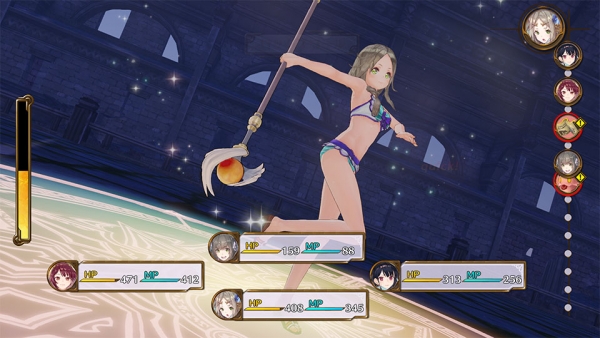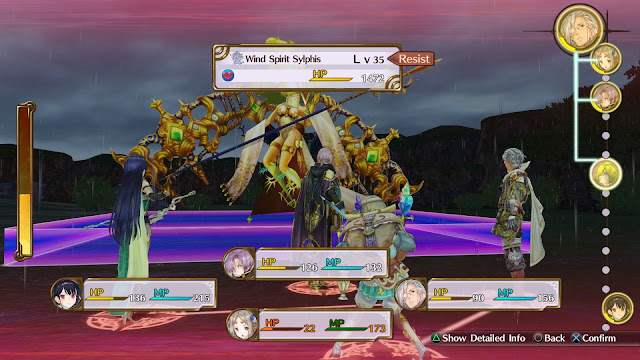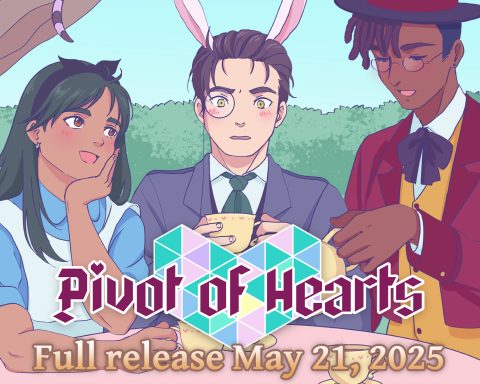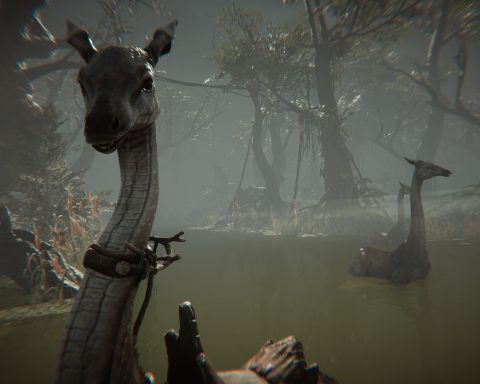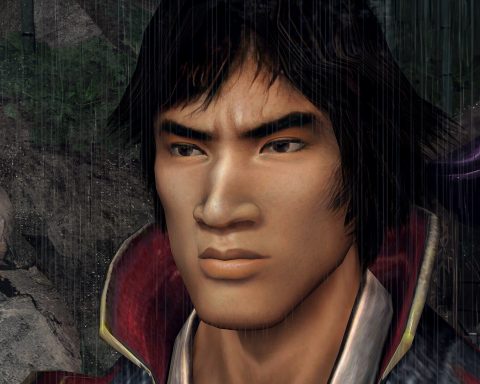Review by Matt S.
In a delightfully odd way, Atelier Firis: The Alchemist and the Mysterious Journey is simultaneously the biggest step forward for the series, and, after the Dusk trilogy took the Atelier series down some more serious thematic roads, also its biggest step back towards tradition. Having been the director of each game since 2009’s Atelier Rorona, Yoshito Okamura steps up to become the new game’s producer, and new director, Shinichi Yoshiike, puts his stamp on a very different kind of game in his stead.
Related reading: Last year at TGS, Matt was able to have a chat with Yoshito Okamura about the new direction for the Atelier series. Read that interview here.
As per the word “Journey” in the title, Atelier Firis is as much about travel and adventure as it is alchemy, which is a departure for the series. This game’s leading lady, Firis, is a young alchemist who has grown up in a dreary and reclusive underground community. She wants to see the world, but before her family, and the community itself, allow her to do that she must prove she is capable by becoming a formally accredited alchemist. She can only do so by winning the approval of three existing alchemists, and so she sets off on a journey to collect the signatures of three alchemists and earn the right to be treated as an adult member of her community.
Coming of age stories are nothing new to the Atelier series. All of them have, in one form or another, involved a young girl coming to terms with who she is and her role in the world; but we’ve not had a character quite so explicitly young as we have in Firis. Firis is adorably naive and childlike; she’s never even experienced the open air, so every new environment she comes across fills her with awe. She says some very youthful things: telling her parents she “hates” them in the heat of a fight, before storming out of their home to start her journey, for example. The growth that we witness in this character through her adventure, as she learns and matures, is the most extended that we’ve seen in all Atelier games to date.
Coming of age stories have a timeless quality to them and keep popping up in our art and entertainment, because it’s through them that we get a sense of a culture’s moral core values as reflected in the protagonist, as he/she comes to terms with their role in the world. They’re also highly culturally relevant because they reflect attitudes towards the upbringing of children, and we can learn a lot about a nation’s culture from its coming of age stories.
On Japan’s part, independence is something that children are meant to obtain from a very young age; they’re expected to be able to get themselves to school and back home again, as well as between all their activities, almost from the age that they start going to school. This is possible because Japan is a remarkably safe country for young kids to wander around unsupervised, and Firis is a game that very much speaks to that specific theme around earning independence and responsibility away from the influence of parents.
Though that general theme might not resonate so strongly with western audiences, Firis is nonetheless the most relatable story that we’ve had from the series to date, as Yoshiike strips back many of the more abstract ideas that drove many Atelier games, instead opting to put us permanently into the action. In previous Atelier games (at least as far back as Rorona; sadly I haven’t been able to play any before that), each area that the characters could explore was quite small, and upon leaving the area they’d be presented with a map that allowed them to move on to the next area. It was a clever, low-budget way of giving players the ability to explore a large number of different spaces, but that map is gone in Atelier Firis, and it’s for the better.
Instead, Firis and her party of guardians, protectors and allies, is presented with large areas filled with wonders to explore, with the eventual edge of each area leading organically on to the next large, generally open space. The seamless world building here is so much more consistent in building a sense of environment into the game, and the fact that we’re also controlling Firis directly throughout the entire experience, rather than just sending her to arbitrary points on a map, helps build a rapport with the character. I’ll be honest with you; at first I found her to be quite irritating and self-absorbed. By the end of the game I was utterly in love with her. And though the game’s world isn’t exactly Horizon or NieR: Automata in its complicated art design (boy, we’ve been spoiled for stunning art recently), there’s an unending pleasantness that makes it very easy on the eyes nonetheless. In short, it’s all quite immersive and the world helps to develop the character of Firis herself, and this is a step up for a series that had in the past largely treated environments as purely functional necessities.
And it’s important to note that Atelier Firis is very pleasant. I admired Gust for taking on some more sombre material with the Dusk trilogy, which tracked a doom that was slowly destroying the world, but the Arland series before that was light and bubbly, where bopping a cute little blob monster (puni) on the head and using alchemy to bake pies was as important as finishing the actual tasks set before you. Firis, like Sophie before it, puts being pleasant ahead of any other considerations, and in a month that is so overwhelmingly filled with dense, intellectually challenging and draining games, there’s something to be said about one game being light and irreverent.
At the start of the review I mentioned that the game has taken a step back towards tradition in some ways, and the most significant of those is the re-introduction of a time limit. This is going to be controversial, I know. Back with the Arland games, and then Atelier Ayesha from the Dusk series, there was a time limit to achieve everything you needed to do to successfully “pass” the game. Every action you took in-game – whether that was exploring new areas, fighting enemies, gathering resources, or using those resources to create new items through alchemy – would chew up time. The goal in each game was to carefully chart a path, using time as the precious resource, in order to meet the right objectives and wind up with the best ending. This time limit was always gentle, but it nevertheless had the potential to stress people out as well.
Atelier Firis also has time limits, and they’re also gentle, but present enough that you won’t be able to do absolutely everything you might want to throughout the story. People who were glad to see the mechanic disappear in the later Dusk games will be irritated that it’s back. Missions and side quests do come at the player constantly, but with time remorselessly ticking down there will always be the temptation to skip at least some of them, especially when the main time limit is roughly a year of in-game time, and you’re never really quite sure if you’re ahead or behind schedule.The flip side to that is that the time limit also drives players ever forward on their quest, and for a game in which exploration is a major theme, the occasional nudge to avoid getting stuck in one area, grinding away at one object, is in fact quite welcome.
While the journey itself is far more important to Atelier Firis than in other Atelier games, the alchemy that the series is formed around remains as essential as ever. Dotted around the landscape are bonfires at which you can set up a portable atelier, to mix and match ingredients to make stuff. The alchemy system here is largely cribbed from Atelier Sophie, which I know didn’t sit well with everyone, but in my opinion strikes a perfect balance between accessibility and strategy. Ingredients have different qualities and “traits” that can affect the final product’s capabilities and power. Get really good quality ingredients together and you’ll produce a superior bomb that can have additional effects on the enemy, for example. There’s a playful sense of experimentation in this system, where you’re encouraged to throw random things together and see what comes out of the mess. Actually mastering the alchemy system to produce the kind of stuff that you need for the game’s most significant challenges can take a lot of practice and dedication in hunting down the choicest ingredients; while all that might sound positively domesticated and boring, in practice the sheer variety of things you can “cook” and the challenge to maximise the quality of those things is a process that simply never gets dull, no matter how many Atelier games I’ve played.
If there are a couple of things that bug me about Atelier, they’re minor indeed. Outside of the major party characters, Atelier Firis’s minor characters aren’t overly distinctive, making the sidequests that they throw at you more tiresome than enjoyable. Furthermore, in the later part of the game the time limit goes away, and I found the game to lose its focus then. I began to spend time aimlessly, and when that happens, the world that was previously so exciting to explore starts to look a little too empty and redundant in places.
These are really minor complaints, though, when stacked against the fact that Atelier Firis took me back to the innocence and joy in those Arland games that got me interested in the series in the first place. Most importantly, given that this is the first time that he’s helmed the creative side of an Atelier title, Shinichi Yoshiike has proven himself to be a confident and safe pair of hands to shape the series into the future. As such, I expect that this series will continue to remain my favourite among the more traditional JRPG franchises out there.
– Matt S.
Editor-in-Chief
Find me on Twitter: @digitallydownld



